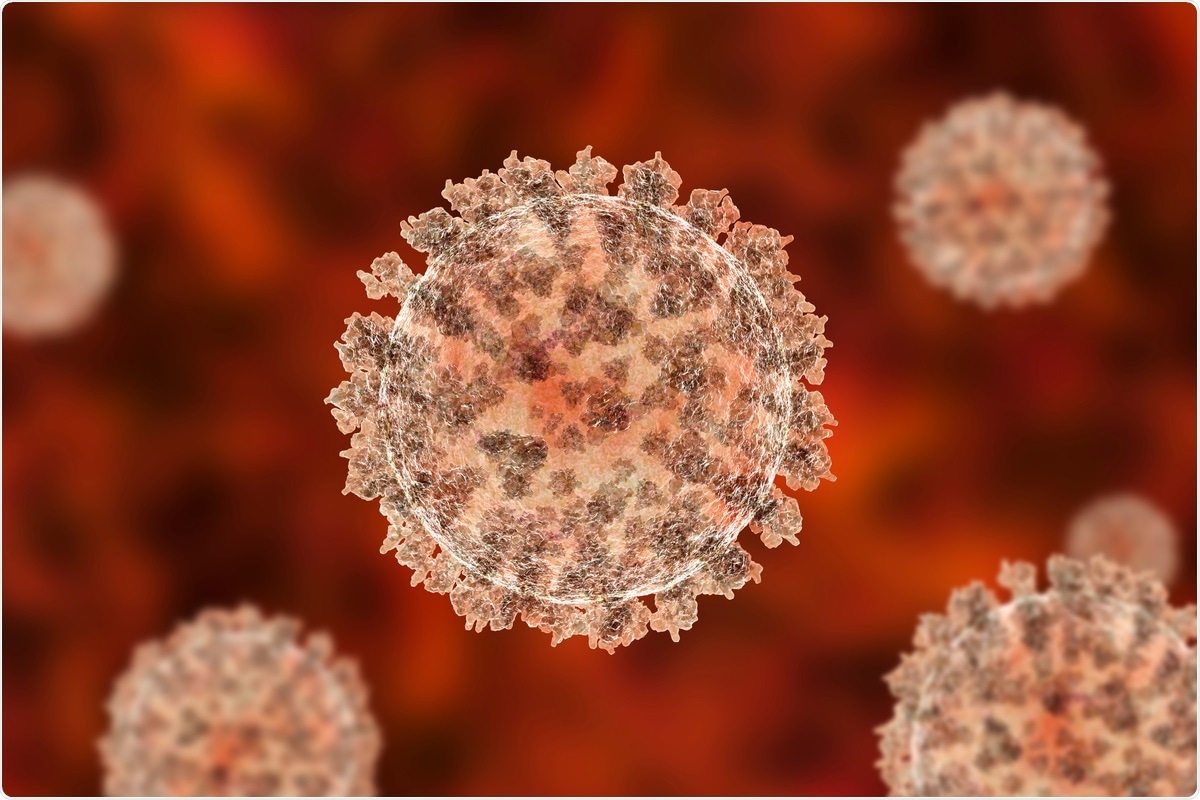The current focus for disease management against severe acute respiratory syndrome coronavirus 2 (SARS-CoV-2) is vaccination. However, rapid diagnosis of variants is still pivotal for public health strategies for future variants. With the observed evolution of the virus into multiple variants of concern (VOCs) causing breakthrough infections globally, there is a need for a rapid, inexpensive, widely deployable, and label-free diagnostic platform with a high degree of sensitivity to manage current and future pandemics.
 Study: Label-Free SARS-CoV-2 Detection on Flexible Substrates. Image Credit: Kateryna Kon/ Shutterstock
Study: Label-Free SARS-CoV-2 Detection on Flexible Substrates. Image Credit: Kateryna Kon/ Shutterstock

 This news article was a review of a preliminary scientific report that had not undergone peer-review at the time of publication. Since its initial publication, the scientific report has now been peer reviewed and accepted for publication in a Scientific Journal. Links to the preliminary and peer-reviewed reports are available in the Sources section at the bottom of this article. View Sources
This news article was a review of a preliminary scientific report that had not undergone peer-review at the time of publication. Since its initial publication, the scientific report has now been peer reviewed and accepted for publication in a Scientific Journal. Links to the preliminary and peer-reviewed reports are available in the Sources section at the bottom of this article. View Sources
Background
Different constraints limit the available SARS-CoV-2 testing methods for a widespread adaptation. Despite being highly accurate, reverse transcription real-time quantitative polymerase chain reaction (RT-qPCR) and Clustered Regularly Interspaced Short Palindromic Repeats (CRISPR) based tests are slow, labor-intensive, and depend on sample handling, storage, transportation, and operator expertise for their reliability. Moreover, their scale-up is constrained by global supply challenges due to the huge demand for PCR primers.
ELISA (Enzyme-linked immunosorbent assay) and lateral flow immunoassays that detect antibodies corresponding to specific viral antigens like the SARS-CoV-1 spike or nucleocapsid protein have low sensitivity. They require extensive sample preparation depending on the stage of infection and pose risks of false-positive outcomes in 5-11% cases. Available rapid antigen tests have low sensitivity and risks of false-negative results requiring further confirmation.
Researchers have also attempted to use biosensors for rapid detection of the SARS-CoV-2 but have faced issues with deciding on specific probes for the sensors, rendering them useless in detecting mutants. Raman spectroscopy, which relies on the inelastic scattering of light to quantify the unique vibrational modes of molecules, has thus far enabled accurate label-free fingerprinting of individual viral components. Notably, structural and chemical alterations in the genome and the capsid proteins are reflected as changes in the vibrational features, as depicted in studies with echovirus 1 in previous studies.
Researchers at Johns Hopkins University have thus tried to develop an innovative platform for ultrasensitive and rapid detection of SARS-CoV-2 by exploiting a variation of Raman Spectroscopy, namely Surface-enhanced Raman spectroscopy (SERS). Researchers recently published a report in the preprint server medRxiv* describing their research on SERS signatures recorded on highly reproducible plasmonically active nanopatterned rigid and flexible substrates in a label-free manner. To enhance the weak Raman signal from the SARS-CoV-2 virus, they developed novel nanomanufacturing paradigms for large-area rigid and flexible SERS substrates patterned by nanoimprint lithography (NIL) coupled with transfer printing.
Method
In principle, SERS intensifies a weak Raman signal arising from biological samples adsorbed on noble metal nanostructures. It then combines the high molecular specificity with near single-molecule sensitivity and enables spectroscopic quantification of multiple pathogen concentrations in small volumes. Researchers used this technique to demonstrate large area, label-free, and rapid testing sensor platforms fabricated on rigid and flexible substrates for fast and accurate detection of SARS-CoV-2.
Researchers developed novel nanomanufacturing paradigms for large-area rigid and flexible SERS substrates patterned by nanoimprint lithography (NIL) coupled with transfer printing to amplify weak Raman signals. The plasmonic nanostructures were composed of a Field-Enhancing Metal-Insulator Antenna (FEMIA) architecture, with multiple alternate stacks of silver and silica (similar to metal-insulator-metal plasmonic nano-antennas). The arrangement had its primary resonance frequency close to the laser excitation, ensuring maximum Raman signal amplification.
Researchers were able to directly read strong signatures of the viral fusion protein of SARS-CoV-2 and H1N1 in the purified form from the SERS spectra with an experimental limit of detection of 500 nM. They used principal component analysis (PCA) and random forest classification to identify four different enveloped RNA viruses with an accuracy greater than 83%. Using this platform on a flexible substrate, researchers detected SARS-CoV-2 in a complex body fluid like saliva, typically within 25 minutes and with at least 83% accuracy. Sensing on a flexible FEMIA substrate allowed mounting the sensor on curved and flexible surfaces and wearables for rapid identification of the virus in a variety of situations.
Implications
The SERS approach features large area nanopatterning, fabrication in both rigid and flexible formats for wearables, and is powered by machine learning. This strategy can be immensely useful in the rapid detection of pathogens irrespective of mutation, with the help of label-free biosensors and help in managing current and future pandemics.

 This news article was a review of a preliminary scientific report that had not undergone peer-review at the time of publication. Since its initial publication, the scientific report has now been peer reviewed and accepted for publication in a Scientific Journal. Links to the preliminary and peer-reviewed reports are available in the Sources section at the bottom of this article. View Sources
This news article was a review of a preliminary scientific report that had not undergone peer-review at the time of publication. Since its initial publication, the scientific report has now been peer reviewed and accepted for publication in a Scientific Journal. Links to the preliminary and peer-reviewed reports are available in the Sources section at the bottom of this article. View Sources